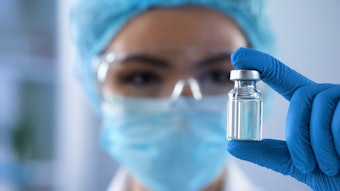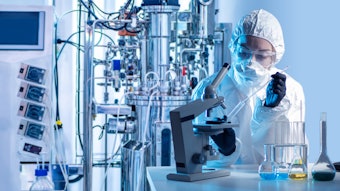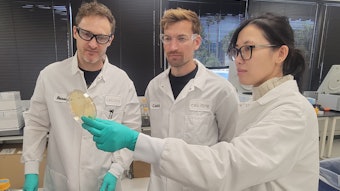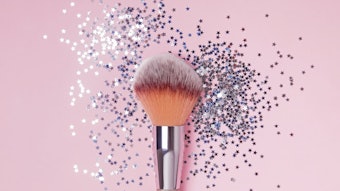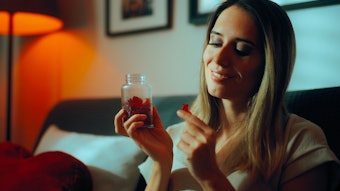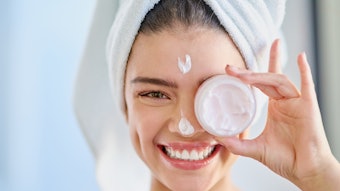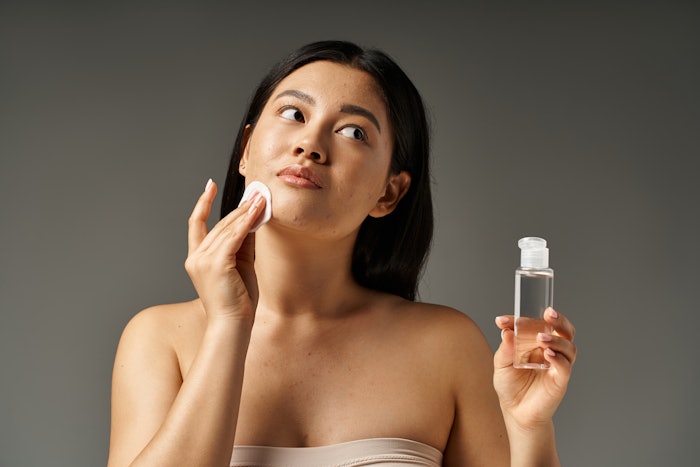
Editor's note: Vitamins C, E and niacinamide combat oxidative stress and inflammation in acne, improving scars, redness and sebum control. Other skin repair compounds from plants also continue to emerge. Formulating strategies for these materials are described here.
Log in to view the full article
Editor's note: Vitamins C, E and niacinamide combat oxidative stress and inflammation in acne, improving scars, redness and sebum control. Other skin repair compounds from plants also continue to emerge. Formulating strategies for these materials are described here.
Life in an oxygen-rich environment is a continuous interplay of oxidation and reduction reactions. Antioxidants inhibit or reduce unwanted reactions between molecular oxygen and chemically related species with other molecules. Antioxidants are present in all living organisms as a defense mechanism to control and counteract the effects of oxygen species within or on cells.
Under certain conditions, the protective mechanisms against lipid peroxidation become overwhelmed, leading to membrane disruption and organelle dysfunction. Peroxidized lipids can initiate further free radical reactions, creating a destructive cascade that affects ‒SH groups, proteins and other cellular compounds. Hydroxyalkenols produced in these reactions exhibit chemotactic properties, inducing inflammatory responses.
Acne vulgaris is a typical dermatological disorder with a multifactorial pathogenesis including oxidative stress. Indeed, oxidative stress has been demonstrated to play a key role in acne progress and may be employed as a biomarker index to assess the disease's activity and to monitor its treatment.1
Given the role oxidative stress plays in acne, understanding the underlying oxidizing species and oxidation processes is essential. This article touches briefly on these mechanisms and highlights how antioxidant strategies can help to restore balance to acne-prone skin.
Oxidizing Species and Antioxidant Mechanisms
Oxidation processes always involve two key players: the oxidizing species and the oxidation-prone species (reducing agent). The most reactive oxidizing species is the hydroxyl radical (•OH), which rapidly attacks DNA, causing chemical alterations in deoxyribose, purines and pyrimidines, ultimately leading to mutations and DNA strand breakage.
Another strong oxidant, the superoxide radical (O•-2), is formed in vivo when electrons passing through the mitochondrial respiratory chain escape and directly interact with molecular oxygen. While superoxide radicals can cause protein modifications, they also play a crucial role in immune defense by helping phagocytes kill bacteria.
Hydrogen peroxide (H2O2) is a relatively weak oxidant but generates more reactive species in vivo. Singlet oxygen (O2), an electronically excited form of molecular oxygen, is produced photochemically in cells and by certain chromophores in darkness. It is highly reactive and damages DNA, cholesterol and lipids, contributing to sunburn and premature aging.2
Countering oxidation: Antioxidants employ several mechanisms to counteract harmful reactive oxygen species. These include directly binding to ROS, creating disulfide bonds with thiol groups (like glutathione), dismutating superoxide anions (as superoxide dismutase does), acting as reducing agents in enzymes (like selenium in glutathione peroxidase), quenching free radicals by forming more stable molecules and converting alcohols to ketones (like vitamin C).3
Figure 1 shows the oxidation reaction of vitamin C – one of the most commonly used antioxidants in our industry. Here, the oxidation of ascorbic acid at a low pH proceeds via two consecutive one-electron processes involving a radical anion intermediate to yield dehydroascorbic acid.
Antioxidants in Topical Formulas
In topical formulations, antioxidants serve two primary functions: stabilizing and protecting delicate ingredients from oxidation during storage and enhancing skin's antioxidant defenses.
Formula stabilization: The use of antioxidants is a basic strategy to protect a topical formula during its shelf life. Many ingredients in a formulation can be easily oxidized (e.g., perfumes, plant extracts, unsaturated triglycerides, etc.) and therefore require adequate protection.
While the catalytic action of trace metal ions can be blocked by sequestering agents like EDTA, antioxidants are also often added, such as pentaerythrityl tetra-di-t-butyl hydroxyhydrocinnamate, 2,6-di-t-butyl-4-methylphenol (BHT), gallate esters, ascorbic acid and tocopherols. Adequate de-aeration during the production phase is another way of increasing the product shelf-life, as it reduces the amount of dissolved oxygen.
Enhancing skin’s antioxidant defenses: Environmental factors like UV radiation and pollution can deplete physiological antioxidants, leading to oxidative stress, DNA damage and premature aging. Antioxidants help to mitigate these effects by stabilizing free radicals, reducing lipid peroxidation and supporting enzymatic defense mechanisms. It is worth noting that since oxidation is an energy-driven process, UV rays are a significant catalyst, making photoprotection a key strategy in skin preservation.
Antioxidants used as active ingredients must be adequately delivered to the skin for them to be effective. Besides adopting adequate packaging to reduce their contact with environmental oxygen, the formulation strategy requires introducing antioxidants in the internal phase of emulsions and using a complex of additional antioxidants to synergistically stabilize the main active molecule.
Oxidation in Acne-prone Skin
In acne-prone skin, sebum is produced by sebaceous glands that contain reactive oxygen species (ROS) – namely hydroxyl, superoxide and nitrous oxide. These free radicals are responsible for acne irritation.4
Topical treatments for acne often include antibiotics and comedolytic and anti-inflammatory active ingredients like clindamicin, salicylic acid and isotretinoin. However, their frequent use can lead to dry skin or irritation. Moreover, antibiotics can cause bacterial resistance over time.4
For these reasons, along with consumer demand for naturals, there is increased interest among researchers to discover and develop antioxidant therapies based on natural ingredients to treat acne and develop future drugs that overcome resistance and the side effects of current acne therapies.4 Following are examples of natural antioxidant and anti-acne actives that, alone or in combination, could be used for synergist effects in topical formulas.
Vitamin C
Vitamin C (L-ascorbic acid) is an excellent reducing agent with many additional biological benefits, including inducing collagen synthesis and reconstructing the reduced form of glutathione in cells. It offers good depigmenting activity and free radical-quenching properties. However, it is very sensitive to light, temperature and traces of metal ions. Therefore, it degrades irreversibly in aqueous solutions.
Chemically modified derivatives, such as magnesium and sodium ascorbyl phosphate or ascorbyl palmitate, have been developed to overcome this problem.5 In randomized double-blind studies comparing the efficacies of topical formulations containing 5% sodium ascorbyl phosphate (SAP) and 0.2% retinol, separately or in combination, their combination was found to be most effective.
The compounds exerted synergistic effects on lipid peroxidation and sebaceous gland functions in addition to enhancing SAP permeability – thanks to retinol’s effects to increase stratum corneum desquamation, remove keratin plugs and decrease inflammation.6
Tocopherols and Tocotrienols
Tocopherols, known as nature’s most effective fat-soluble antioxidants,7 are phenolic compounds that primarily act by donating an electron to free radicals. This process neutralizes free radicals and stabilizes cell membranes, preventing lipid peroxidation.
Their antioxidant action is particularly important for protecting cell membranes, as free radicals preferentially attack the unsaturated lipids present in the membrane. Tocopherol (or vitamin E) acts as a scavenger of peroxyl radicals, blocking the propagation of oxidative reactions and reducing structural damage to cells.
There are different forms of vitamin E in nature, including α, β, γ and δ-tocopherols, which differ in the number and position of methyl groups on the chromanol ring. Among them, α-tocopherol is the most biologically active and abundant in human tissues. Tocotrienols, a subclass of vitamin E with an unsaturated side chain, have also shown potent antioxidant and anti-inflammatory properties.8, 9
In addition to its role as a lipid antioxidant, the tocopheryl radical, formed after vitamin E donates an electron, can migrate to the membrane surface and be regenerated back into α-tocopherol by ascorbic acid (vitamin C) or glutathione via the enzyme glutathione peroxidase. This recycling mechanism enhances the overall antioxidant efficiency and minimizes lipid peroxidation in lipoproteins and cellular membranes.
Furthermore, vitamin E has been shown to modulate gene expression and cell signaling pathways, particularly those involved in inflammation and immune response. It plays a role in reducing the production of pro-inflammatory cytokines and inhibiting the activation of enzymes involved in oxidative stress.9
Glutathione
Glutathione is a freely water-soluble tripeptide (N-L-γ-Glutamyl-L-cysteinyl)-glycine, with a side ‒SH group. It is the major low molecular weight thiol compound in plant or animal cells and it is necessary to transport amino acids into the cells, It also neutralizes xenobiotics by conjugation (GSH-transferase) as well as potentially toxic endogenous substances (peroxides, free radicals).
Cellular levels of glutathione are essential to detoxify and protect the skin from the lipoperoxides produced by UV irradiation. However, glutathione’s resistance to environmental oxygen is poor. This means the previously described strategies must be adopted to stabilize it in topical formulations.10
Zinc
Zinc is a co-factor in more than 300 metallo-enzyme systems in the human body. It stimulates the action of metallo-proteinases and activates the synthesis of fibroblasts growth factors via DNA and RNA polymerase. Zinc plays a major role in the morphogenesis of skin and in repair processes after injuries.11 Its levels decrease as organisms age, however, and such a reduction may cause reduced immune functions.
The antioxidant action of zinc is not direct, as it cannot modify its oxidation state. Instead, it acts indirectly, enhancing the functionality of detoxifying enzymes. Moreover, it may easily replace iron and copper; these metals are prone to changes in their outer electron number and potentially activating radical reactions.
Zinc has been suggested for compromised skin, such as reducing nickel allergies. Indeed, nickel ions can substitute zinc in urease enzymes,12 deforming their shape and functions.
Zinc also is contained in superoxide dismutase (SOD), where it is essential for enzymatic activity associated with copper. More specifically, zinc plays a fundamental role, along with copper, in the active site of the superoxide dismutase enzyme, whose function is detoxifying superoxide radicals.
Zinc also has an anti-inflammatory action and several mechanisms have been proposed for its effects in acne-affected skin – the most significant being antimicrobial activity against Cutibacterium acnes, the inhibition of lipase and 5α-reductase, and reduction of sebum production and inflammation.
In fact, zinc complexes with glycine and histidine were recently studied as new actives in topical anti-acne treatments, particularly for the low in vitro cytotoxic potential of the complexes for both keratinocytes and fibroblasts, and high activity against C. acnes.13
Niacinamide
Niacinamide (vitamin B3) is a small hydrosoluble molecule, well-tolerated by the skin and essential in nicotinamide adenine dinucleotide (NAD+) synthesis, which is then used to synthesize NADH and NADPH coenzymes. The latter are essential coenzymes in redox reactions and energy production within cutaneous cells. By acting on fundamental biochemical reactions, they have been shown to significantly reduce cutaneous oxidative stress, inflammation and pigmentation.
Moreover, studies have confirmed niacinamide’s: antimicrobial efficacy against bacteria, ability to prevent biofilm formation, and proven efficacy in acne treatment and sebum reduction. Additionally, it contributes to the skin’s extracellular matrix integrity by inhibiting matrix-degrading enzymes, or promoting collagen and elastin production. It should be used at 4-5% in formulations to reach the best results in terms of anti-acne efficacy.14
Plant-derived Antioxidants
Flavonoids, the most-studied category of polyphenols, abundant in fruits and vegetables, act as antioxidants by inhibiting lipoxygenase and lipid peroxidation – and combining them with vitamin C enhances their activity. Examples include procyanidins from grape seed extract; carotenoids like astaxanthin; epigallocatechin gallate (EGCG) from green tea, known to protect DNA against oxidative stress; carnosol and carnosic acid from rosemary – that are effective but pose formulation challenges due to their dark color; and oleuropein from olive leaves, which prevents low density lipoprotein (LDL) oxidation.
It has been demonstrated that, thanks to their significant antibacterial, anti-inflammatory and antioxidant activities, phenolic compounds may be used to treat various types of acne, individually or in combination with commonly used drugs like clindamycin and benzoyl peroxide.
Among the tested phenolic compounds, the most positive results were obtained with EGCG and quercetin, as well as condensed tannins such as terchabulin or castalagin. Promising results were also obtained for two stilbenes: resveratrol and piceatannol. Thanks to its strong antioxidant, antibacterial, antiviral, sebosuppressive and anti-inflammatory effect, resveratrol appears to be one of the most promising natural anti-acne agents.15
Conclusions
Antioxidants in skin care offer dual benefits: stabilizing formulations and protecting the skin from oxidative damage. As research advances, the role of oxidative stress in dermatological diseases like acne and other aging-related skin problems is becoming increasingly evident.
Since acne vulgaris is a disorder with a multifactorial pathogenesis including oxidative stress, the use of antioxidants with multiple benefits such as vitamins C and E, tocotrienols, flavonoids, niacinamide, zinc derivatives and glutathione can be a complementary strategy for anti-acne formulations. Ultimately, the best approach to acne is arguably the combination of molecules and plant extracts with synergistic antioxidant and sebum-control actions.
References
1. Al-Shobaili H.A., (2014). Oxidants and anti-oxidants status in acne vulgaris patients with varying severity. Ann Clin Lab Sci, 44(2) 202-7.
2. Halliwell, B. (1991). Free Radicals and Food Additives. Aruoma, O.I. and Halliwell, B., eds. London, Taylor & Francis, pp 38-45.
3. Chaudhary, P., et al. (2023, May). Oxidative stress, free radicals and antioxidants: Potential crosstalk in the pathophysiology of human diseases. Front Chem, Sec Medicinal and Pharmaceutical Chem, 11.
4. Vora, J., Srivastava, A. and Hashmukh, M. (2018). Antibacterial and antioxidant strategies for acne treatment through plant extracts. Informatics in Medicine Unlocked, 13 128-132.
5. Lionetti, N. (2020). Balancing act: Stabilizing vitamin C for skin benefits. Cosm & Toil, 135(1) 44-51.
6. Ruamrak, C., Lourith, N. and Natakankitkul, S. (2009, Feb). Comparison of clinical efficacies of sodium ascorbyl phosphate, retinol and their combination in acne treatment. Intl J Cos Sci, 31(1) 41-46.
7. Tucker, J.M. and Townsend, D.M. (2005 Aug). Alpha-tocopherol: Roles in prevention and therapy of human disease. Biomed Pharmacother, 59(7) 380-387.
8. Ahsan, H., Ahad, A. and Iqbal, J. (2014). Pharmacological potential of tocotrienols: A review. Nutrition and Metabolism, 11(52).
9. Kaur, H. and Perkins, M.G. (1991). Free Radicals and Food Additives. Aruoma, O.I. and Halliwell, B., eds. London, Taylor & Francis, pp 28-33.
10. Forman, H.J., Zhang, H. and Rinna, A. (2009, Feb-Apr). Glutathione: Overview of its protective roles, measurement and biosynthesis. Mol Aspects Med, 30(1-2) 1-12.
11. McCall, K.A., Huang, C. and Fierke, C.A. (2000). Function and mechanism of zinc metalloenzymes. J Nutrition, 130(5) 1437S-1446S.
12. Jabri, E., Carr, M.B., Hausinger, R.P. and Karplus, P.A. (1995). The crystal structure of urease from Klebsiella aerogenes. Science, 268 (5213) 998-1004.
13. Abendrot, M., Płuciennik, E. and Felczak, A. (2021, Feb 6). Zinc(II) complexes of amino acids as new active ingredients for anti-acne dermatological preparations. Int J Mol Sci, 22(4) 1641.
14. Marques, C., Hadjab, F. and Porcello A. (2024, Mar 30). Mechanistic insights into the multiple functions of niacinamide: Therapeutic implications and cosmeceutical applications in functional skin care products. Antioxidants,13(4) 425.
15. Koch, W., Zagórska, J. and Michalak-Tomczyk, M. (2024). Plant phenolics in the prevention and therapy of acne: A comprehensive review. Molecules, 29(17) 4234.


